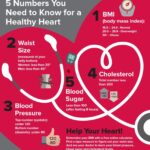Infant Not Moving or Breathing Normally? Step‑by‑Step Actions to Take Now

When an Infant Isn’t Moving and Isn’t Breathing Normally: What To Do Immediately
If you find an infant in a safe environment who is not moving and not breathing normally, take action right away. First, check responsiveness by tapping the foot and calling their name. If there’s no response and breathing is absent or abnormal (gasping), call emergency services or direct someone to call, then begin infant CPR if trained. These rapid steps align with pediatric guidance that abnormal breathing or pauses beyond brief, self-resolving episodes require urgent evaluation [1] , and apnea with color change or unresponsiveness warrants immediate help [2] .
Key Red Flags You Must Act On
Apnea (a pause in breathing lasting 15-20 seconds or more), bluish or pale color, limpness, or unresponsiveness are urgent warning signs. Clinical descriptions note that infants with apnea may stop breathing, turn bluish around the mouth and face, and may need help to restart breathing [2] . Caregivers should not wait if breathing looks abnormal-trust your judgment and call for help [1] .
Step-by-Step: Immediate Response in the First 60-120 Seconds
1) Ensure scene safety: The infant is already in a safe environment; keep it that way-flat, firm surface, away from hazards. 2) Check responsiveness: Tap the foot, say the baby’s name. 3) Assess breathing: Look for chest rise, listen/feel for normal breaths for up to 10 seconds. Gasping is not normal breathing [1] . 4) Call for help: If alone, you may call emergency services; if someone is nearby, have them call while you start CPR. 5) Begin infant CPR if trained: Provide cycles of 30 compressions at roughly 100-120 per minute, depth about 1.5 inches (using two fingers in the center of the chest just below the nipple line), followed by 2 gentle breaths with a barrier if available. Continue until the infant breathes normally, help arrives, or you are relieved. If untrained, emergency dispatchers can guide compressions. Clinical descriptions emphasize that apnea can be accompanied by bradycardia and color change, underscoring urgency for intervention [2] .
Clearing the Airway: Gentle, Targeted Actions
If you suspect a blocked airway (no crying, ineffective cough, or no airflow), use infant choking relief techniques if trained. Do not perform blind finger sweeps. If the infant becomes unresponsive, begin CPR and check the mouth for visible obstructions before breaths. Healthcare sources describe that obstructive apnea can arise from mucus or positioning that kinks the airway, meaning simple repositioning to neutral head alignment can help maintain patency [2] .
Understanding Abnormal vs. Normal Newborn Breathing
Newborns can have irregular patterns such as brief pauses under about 10 seconds followed by several faster breaths-often called periodic breathing-and this can be normal, especially in preterm and even full-term infants. However, if the pause extends or is associated with color change, limpness, or unresponsiveness, treat it as an emergency and call for help [1] . Pediatric centers define apnea episodes typically as pauses over 15-20 seconds and note possible bluish discoloration and need for stimulation or assistance to resume breathing [2] .
Common Medical Contexts That May Be Involved
Potential contributors to abnormal breathing or apnea include infections, metabolic issues, congenital anomalies, and apnea of prematurity in preterm infants whose breathing control centers are still developing. Providers evaluate cause and recommend treatment based on findings [1] . In some infants, a brief, resolved unexplained event (BRUE) presents with sudden changes in breathing, tone, or responsiveness lasting under 30-60 seconds without an immediate explanation after evaluation; this requires medical assessment to rule out underlying causes and is distinct from SIDS [3] .
Detailed Action Plan: From Discovery to Handover of Care
1) Immediate assessment: Verify safety and responsiveness. Observe breathing and color for up to 10 seconds. If breathing is absent or abnormal, proceed.
2) Activate help: In many regions, you can call emergency services. If someone else is present, have them call while you begin care. Dispatchers can often walk you through CPR steps.
3) Positioning and airway: Place the infant on a firm, flat surface. Gently position the head in a neutral, sniffing position to prevent airway kinking. If you see obvious mucus at the nostrils, gentle suctioning may help; healthcare guidance notes that nasal blockage can impede airflow in newborns who are primarily nose breathers
(context on nasal obstruction)
[4]
. Do not delay CPR for prolonged suction attempts.
4) Compressions and breaths: If no normal breathing, start CPR if trained. Provide 30 compressions followed by 2 gentle breaths. Keep compressions at about 100-120 per minute. If the infant resumes effective breathing and movement, place in recovery position and continue to monitor until help arrives.
5) Observe indicators: Note any cyanosis (bluish lips/face), pallor, limpness, or abnormal tone, as these are clinically significant and should be reported to responders [2] .
6) Handover: When responders arrive, communicate timeline, observed breathing patterns, actions taken, and any preceding events (feeding, illness, choking risk, recent falls). Such context helps clinicians determine whether the episode could represent apnea, BRUE, infection, or another cause [3] , [1] .

Source: clubsister.com
Follow-Up Care and What to Expect
Even if the infant recovers quickly, medical evaluation is important. BRUE criteria emphasize events that are sudden, brief, and unexplained; clinicians assess for reflux, infection, airway anomalies, cardiac or neurologic issues, and other causes when indicated. A cause is found in about half of cases, and risk stratification guides testing and monitoring [3] . In premature infants, apnea of prematurity may be diagnosed; this can be central (due to immature respiratory control) or obstructive (airway blockage), sometimes occurring with bradycardia. Management and prognosis depend on gestational age and clinical course [2] .
Prevention and Readiness Tips
– Learn infant CPR: Consider taking a certified infant CPR course offered by local hospitals or recognized training organizations. Being prepared can make a critical difference during an apnea event. – Practice safe sleep: Place infants on their backs on a firm sleep surface without soft bedding. While BRUE is not SIDS, safe sleep practices help reduce risks associated with sleep-related events. – Monitor illness: If the infant has a cold, bronchiolitis, or feeding difficulties, watch for increased work of breathing, color changes, or poor feeding and seek care as appropriate. – Know your infant’s baseline: Normal newborn breathing can be irregular; however, extended pauses, color changes, or unresponsiveness are not typical and require urgent evaluation [1] .
Real-World Scenarios and How to Respond
Scenario A: You find a 6-week-old infant limp and not moving in a crib, with gasping breaths. Action: Gasping is not normal breathing. Call emergency services immediately, begin infant CPR if trained. Report any recent illness or feeding issues. This aligns with apnea red flags and urgent response guidance [2] , [1] .
Scenario B: A preterm infant briefly pauses breathing for under 10 seconds, then resumes with several quick breaths and remains pink and responsive. Action: Observe closely; this pattern may represent periodic breathing common in newborns. If pauses lengthen, color changes, or the infant becomes limp, call for help [1] .
Scenario C: After feeding, an infant becomes pale and stops breathing for ~20 seconds, then resumes after stimulation. Action: This may represent apnea or a BRUE-like event. Seek urgent medical evaluation to rule out reflux-related aspiration, infection, or other causes; clinicians find specific causes in many cases and guide management [3] .

Source: screenrant.com
When to Seek Emergency Care vs. Same-Day Evaluation
Seek emergency care immediately for: no or abnormal breathing, apnea of 15-20 seconds or more, blue or pale color, limpness, or unresponsiveness. Pediatric sources describe these as associated with apnea and potential bradycardia requiring prompt assistance [2] . Consider same-day evaluation when: brief breathing irregularities resolve on their own without color change or loss of tone, but you remain concerned; clinicians encourage calling if anything sounds or looks off [1] .
Accessing Help and Information
– Emergency response: In most areas, you can dial your local emergency number for immediate assistance. Dispatchers may coach you through CPR over the phone. – Pediatric evaluation: Contact your pediatrician’s office for urgent follow-up after any concerning episode. Ask about same-day appointments or nurse triage. – Education: Consider enrolling in an infant CPR course through local hospitals or recognized training organizations. If you’re unsure where to start, ask your pediatrician’s office for recommended classes.
Key Takeaways
If an infant is not moving and not breathing normally, treat it as an emergency: check responsiveness, assess breathing, call for help, and start infant CPR if trained. Extended pauses, blue or pale color, or limpness are red flags of apnea and require urgent care. While some irregular breathing patterns may be normal in newborns, caregivers should trust their judgment and seek help when something seems wrong [1] , [2] , [3] .
References
[1] Cleveland Clinic (2025). Periodic Breathing in Newborns.
[2] UCSF Benioff Children’s Hospitals (2024). Apnea.
[3] MedlinePlus (2024). Brief Resolved Unexplained Event (BRUE).






